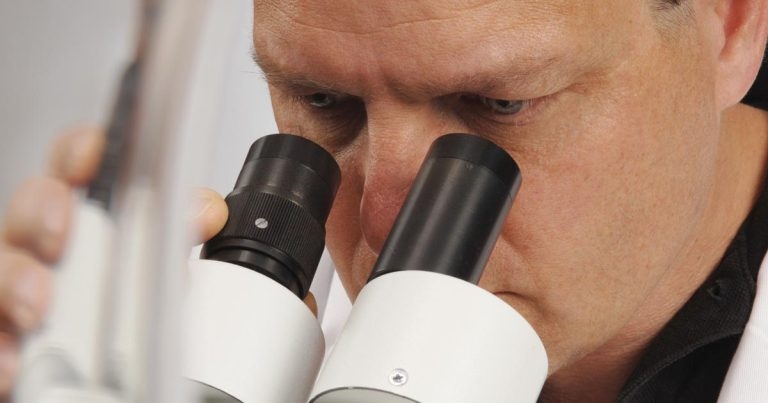13 Aug 2018
Alex Gough also summaries studies into histoplasmosis, total IV anaesthesia and duodenum intubation during gastrointestinal endoscopy in his latest Research Review.

Image © James Steidl / Adobe Stock.
Fluoroquinolone antibiotics are often used in veterinary practice, although they should be used in accordance with good antibiotic protocols to reduce the risk of resistance.
Cepiel et al1 performed a study to assess the effects of long-term treatment with the fluoroquinolones enrofloxacin and pradofloxacin on ECG. The drugs were administered orally for 14 days, and an ECG performed before and after treatment.
The study found enrofloxacin changed the phase of depolarisation and repolarisation of the ventricles, increasing the risk of ventricular arrythmia. Pradofloxacin had a lesser effect on ECG and was considered safer.
Total IV anaesthesia (TIVA) can be used instead of inhaled anaesthesia. Bustamante et al2 performed a study to compare the effects of anaesthesia with propofol or isoflurane on mean arterial blood pressure and ventilation in dogs undergoing orthopaedic surgery.
The dogs were premedicated with dexmedetomidine and methadone, and induced with propofol, then given epidural anaesthesia. They were randomised to be maintained with either propofol or isoflurane. The dogs receiving TIVA had a higher mean arterial blood pressure, but were prone to respiratory depression.
The authors noted by using this protocol, TIVA is a suitable alternative to inhalation anaesthesia. However, mechanical ventilation should be available because of the risk of respiratory depression.
Parathyroidectomy is a procedure performed to correct hypercalcaemia caused by hyperparathyroidism (usually primary). It has been suggested prophylactic administration of calcitriol may reduce the risk of postoperative hypocalcaemia.
Armstrong et al3 performed a retrospective study to determine the effect of calcitriol administration on 78 dogs with primary hyperpathyroidism treated with surgical parathyroidectomy. Postoperative ionised calcium concentrations were measured every 12 hours for 2 days after surgery.
Prophylactic calcitriol administration had no significant effect on postoperative ionised calcium levels. However, preoperative ionised calcium concentrations were found to be significantly positively associated with postoperative ionised calcium concentrations.
Histoplasmosis is a fungal infection caused by inhaling or consuming the fungus Histoplasma capsulatum. Wilson et al4 performed a retrospective case series with a cohort study to assess clinical manifestations of the disease, compare outcomes with different treatments and identify prognostic markers.
A total of 79 dogs were included in the study. Working dogs and herding breeds were found to be more commonly affected by the disseminated form of the disease, while toy breeds tended to have the gastrointestinal form. It was possible to achieve a diagnosis in many cases from blood smears or rectal cytology.
A total of 64% of dogs treated with fluconazole achieved remission, compared to 71% treated with itraconazole, but no significant differences existed between the two treatments in terms of survival, remission or relapse. Negative prognostic indicators included dyspnoea and the need for oxygen, icterus, anaemia and hypercalcaemia. However, diarrhoea was found to be a positive prognositic factor.
The authors recommended histoplasmosis be included in the differential list for any sick dog that comes from an area where histolplasmosis is endemic, as clinical signs may be non-specific.
Weight loss in overweight animals may be associated with increased activity levels.
Pallotto et al5 performed a study to determine the effects of a weight loss diet on voluntary physical activity, body composition and faecal microflora of overweight cats. The diet was moderate protein and high fibre, and eight neutered male adult cats were included in the study. Bodyweight was maintained for 4 weeks, after which the cats were fed with the aim of losing 1.5% of bodyweight per week for 18 weeks.
Food intake, bodyweight, body condition and composition, serum biochemistry, physical activity and faecal microflora were assessed at various time points. Bodyweight, body condition score, body fat and serum triglyceride concentrations all decreased significantly. The energy required to maintain bodyweight was less than what the National Research Council estimated for overweight cats. The relative proportions of Actinobacteria and Bacteroidetes bacteria decreased as weight was lost.
The authors concluded feeding a moderate-protein, high-fibre diet seems to be safe and effective for weight loss in cats. They also believed the energy requirements for neutered cats may have previously been overestimated and suggested these levels are reassessed.

Congenital portosystemic shunts can lead to various clinical signs, including neurological changes. Although the condition is usually amenable to surgical treatment, postoperative seizures are reported as a complication, and these can be hard to treat.
The pug is prone to both congenital extrahepatic portosystemic shunts and necrotising meningoencephalitis.
Wallace et al6 performed a retrospective study of 14 pugs that had a surgical correction of a single extrahepatic portosystemic shunt, and compared them with 30 dogs of various breeds that underwent the same procedure. Four pugs died or were euthanised within a month of surgery due to neurological complications, compared to one dog of other breeds. However, no evidence of encephalitis was seen on these cases at postmortem.
The authors concluded pugs may be at an increased risk of serious neurological complications after surgery for portosystemic shunts, but the reasons and risk factors for this require further study.
Intubation of the duodenum during gastrointestinal endoscopy is essential to take biopsies of the small intestine, but can sometimes be challenging.
McFadzean et al7 performed a retrospective, randomised, blinded clinical trial to assess the effect of premedication with butorphanol or methadone on the ease with which intubation of the duodenum could be achieved.
A total of 20 dogs were included in the study and were randomised to receive either butorphanol or methadone premedication. The ease of intubation was graded on a scale of one (immediate entry) to four (no entry after two minutes). The median ease of intubation and the time to achieve intubation were both lower in the butorphanol than the methadone groups. The butorphanol group also had more spontaneous opening of the pyloric sphincter.
The authors concluded butorphanol premedication made intubation of the duodenum easier.